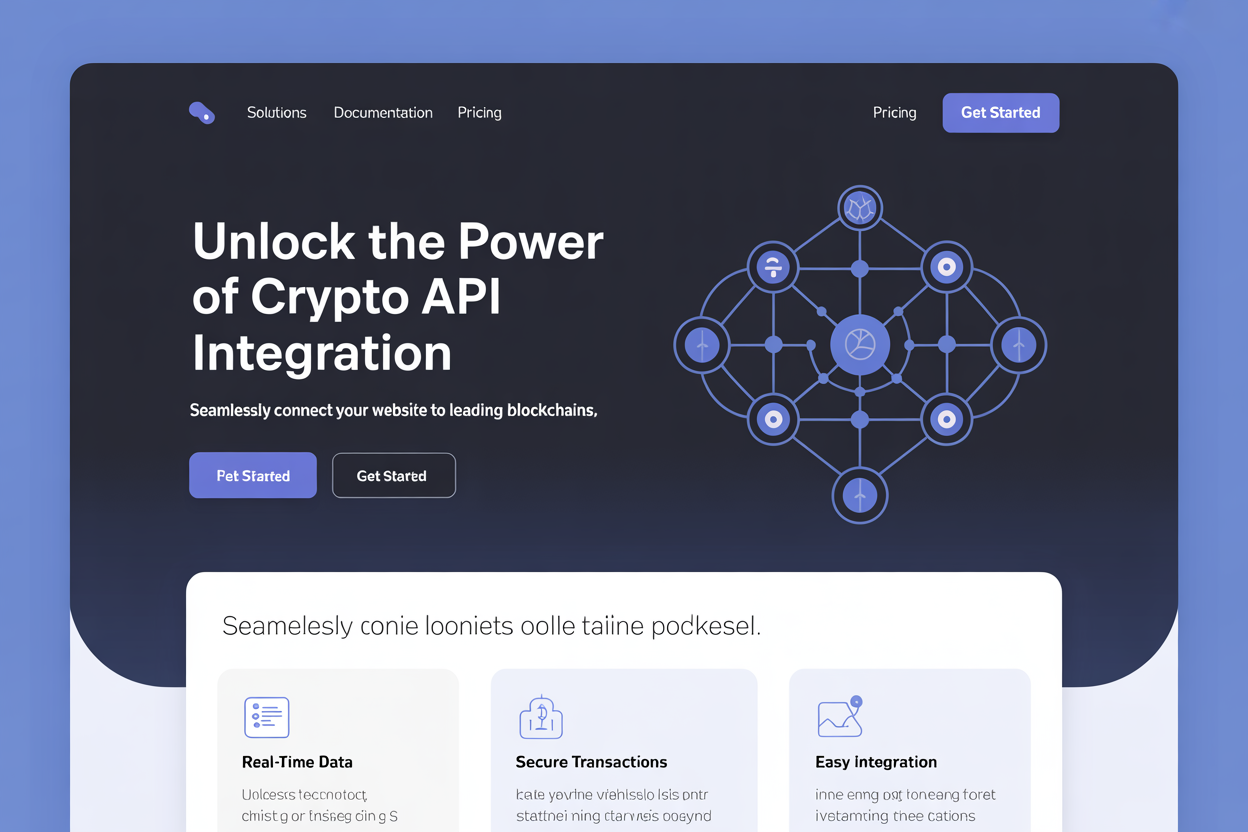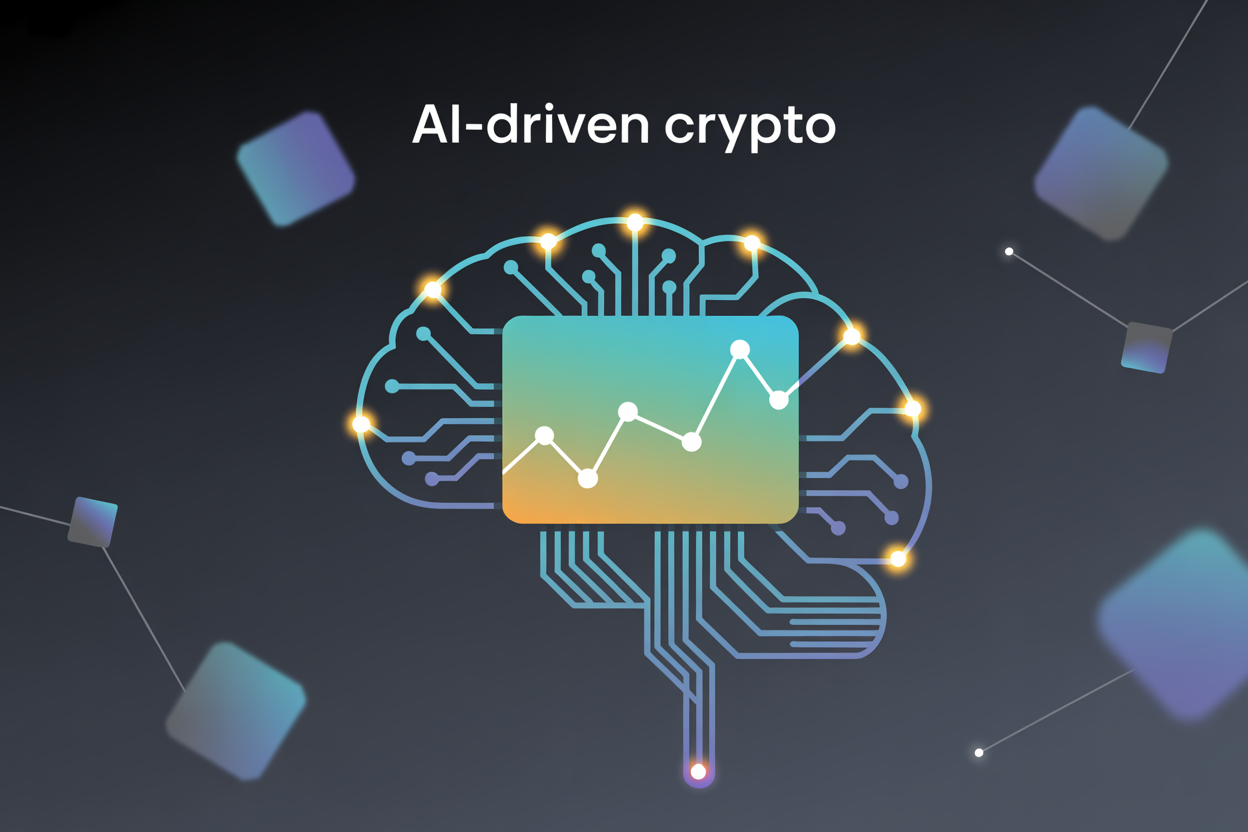Now Reading: Unlock the Power of Crypto API Integration for Your Website
- 01
Unlock the Power of Crypto API Integration for Your Website
Unlock the Power of Crypto API Integration for Your Website

In today’s digital world, having a strong online presence is key for businesses. Crypto API integration can make your website more functional. It gives your users a smooth experience.

Using professional crypto API integration services opens up new chances for your business. You can make cryptocurrency transactions easier and improve security.
This article will show you how to add crypto APIs to your website. We’ll cover the benefits and the best ways to do it right.
Key Takeaways
- Understand the importance of crypto API integration for your website
- Learn how to choose the right crypto API for your business needs
- Discover the benefits of using professional crypto API integration services
- Gain insights into the implementation process and best practices
- Enhance your website’s functionality and security with crypto API integration
What Are Cryptocurrency APIs and Why They Matter
Cryptocurrency APIs are key for businesses wanting to add digital assets to their sites. They let developers access a wide range of cryptocurrency data and functions. This makes it easier to create more detailed and engaging apps.
Defining Cryptocurrency APIs
Cryptocurrency APIs are like rules that let different apps talk to each other. They give developers a way to use lots of cryptocurrency data, like prices and transactions. This saves them from having to start from scratch.
The Core Functions of Crypto APIs
Crypto APIs do three main things: get market data, make trades, and handle wallets. They make it simpler to add cryptocurrency features to websites and apps. This helps businesses offer more services to their users.
Types of Cryptocurrency APIs Available Today
There are many types of cryptocurrency APIs out there, each with its own role:
Market Data APIs
These APIs give you real-time and past market data, like prices and volumes. They’re a must for apps that need the latest market info.
Trading APIs
Trading APIs let users buy, sell, and trade cryptocurrencies right on their platforms. They’re important for exchanges and other financial services.
Wallet and Payment APIs
Wallet and payment APIs help create cryptocurrency wallets and handle payments. They’re essential for businesses that accept cryptocurrencies as payment.
For more details on cryptocurrency APIs and how to develop them, check out Brave New Coin’s developer portal. It has lots of resources and guides.
The Business Case for Crypto API Integration
In today’s fast world, adding crypto APIs to your business can be smart. It helps you keep up with the latest trends. With top API integration solutions, you can improve your online presence and serve your users better.
Enhanced User Experience and Engagement
Adding crypto APIs lets you use real-time data. This makes your site more lively and interesting. Users will stick around longer and be happier because they get the latest info and services.
Access to Real-Time Market Data
Another big plus is getting real-time market data. This is key for people who want to make smart choices with their crypto. By offering this data, you help your users make better decisions, improving their experience.
Expanded Payment Options and Revenue Streams
Adding crypto payment options through efficient API integration for cryptocurrencies opens up new ways to make money. It attracts more customers and shows you’re ahead in finance. For more on crypto’s future, check out our detailed analysis.
Competitive Advantage in the Digital Economy
Being early to adopt crypto API integration gives you a big edge. It shows you’re ready for change and care about your customers. This sets you apart from others.
Essential Prerequisites Before Starting Your Integration
Before starting, it’s important to consider a few key factors. A well-planned integration is key for a secure crypto API integration and a reliable API integration for digital assets.
Technical Infrastructure Requirements
First, check your technical setup. Look at your server capacity, network security, and software compatibility.
Legal and Compliance Considerations
It’s also crucial to understand the legal side. Make sure you follow rules like AML/KYC and data protection laws.
Resource and Budget Planning
Planning your resources and budget is essential. Think about:
- Development Resources: You’ll need skilled developers who know crypto APIs.
- Ongoing Maintenance Costs: You’ll need to budget for updates, security patches, and monitoring.
By tackling these steps, you can make sure your integration goes smoothly and is secure.
Evaluating Your Website’s Needs for Crypto Integration
To integrate cryptocurrency APIs well, you need to know your website’s goals and what it can do. You also need to think about what your users want. This helps make sure your crypto features work well and are useful to your users.
Identifying Your Integration Goals and Use Cases
Start by figuring out what you want to do with crypto API integration. Do you want to enhance user engagement with live crypto data? Or do you want to expand your payment options to include different cryptocurrencies? Knowing your goals helps you pick the right APIs and features.
Assessing Your Technical Capabilities
Then, check if your website can handle crypto API integration. Look at your team’s skills, server power, and security. Knowing what you can do technically helps you pick the best integration method for your resources.

Determining User Expectations and Demands
It’s important to know what your users want and expect. If they’re into cryptocurrency, they might want things like live price updates or portfolio tracking. Use this info to choose the best cryptocurrency API services that can give them what they need.
Selecting the Right Integration Approach
Finally, pick an integration method that fits your goals, technical skills, and what your users want. This might mean choosing between API providers, deciding on customization, and planning for growth and updates.
Top Cryptocurrency API Services in 2023
In 2023, the world of cryptocurrency API services is more varied than ever. This variety meets the growing need for crypto functions on websites. It’s because more people are using cryptocurrencies.
Coinbase API: Features and Capabilities
The Coinbase API is known for its robust functionality and user-friendly interface. It lets users buy, sell, and store cryptocurrencies safely. It also gives real-time market data, helping both new and seasoned traders.
Binance API: Trading and Market Data
Binance API is famous for its high-performance trading capabilities and detailed market data. It supports many cryptocurrencies and has advanced trading options like futures and margin trading. Its real-time data is crucial for traders to keep up with market changes.
CoinGecko API: Comprehensive Market Information
CoinGecko API is known for its comprehensive market information. It gives insights into cryptocurrency prices, trading volumes, and market capitalization. It’s great for developers who need detailed market data for their apps.
CoinMarketCap API: Industry Standard Data
The CoinMarketCap API is seen as an industry standard for crypto data. It offers current and accurate info on cryptocurrency prices, market capitalization, and trading volumes. Its trustworthiness makes it a top choice for developers and investors.
Kraken API: Advanced Trading Features
Kraken API has advanced trading features, like margin trading and staking. It’s for both individual traders and big clients, offering a safe and reliable place for crypto transactions.
In conclusion, 2023 brings a wide range of cryptocurrency API services. Each has its own special features and abilities. Whether you need strong trading options, detailed market data, or top-notch security, there’s an API for you.
Comparing API Features and Pricing Models
When you look into cryptocurrency API services, it’s key to know the feature and pricing differences. This helps with reliable API integration for digital assets. You’ll find services ranging from free with basic features to premium with advanced ones.
Free vs. Premium API Services: What You Get
Free APIs are great for small projects or testing. They offer basic data and updates that are a bit delayed. On the other hand, premium APIs give you full data, updates in real-time, and more support. This makes them perfect for big websites and professional use.
For example, a reliable cryptocurrency investment platform needs the strong features of a premium API.
Understanding Rate Limits and Data Accessibility
Rate limits show how many API requests you can make in a set time. It’s important to know these limits to keep your app running smoothly. Premium services usually have higher limits or no limits at all.
Evaluating Support and Documentation Quality
Good support and detailed documentation are crucial for efficient API integration for cryptocurrencies. Look for providers with clear guides, quick customer support, and maybe forums for help.
Community and Ecosystem Considerations
The size and activity of a provider’s community show how reliable the API is. A lively community offers extra help, like libraries and tips for solving problems.
The Complete Crypto API Integration Process
Integrating crypto APIs needs careful planning and execution. This ensures a smooth user experience. It involves several key steps for a successful implementation.
Creating Developer Accounts and Profiles
The first step is to create developer accounts and profiles. You register on the platform’s website, verify your email, and sometimes provide KYC information.
After setting up your account, get familiar with the developer dashboard. Here, you’ll find API documentation, test environments, and other important resources.
Obtaining and Securing API Keys
Next, obtain your API keys. These keys authenticate your requests to the API. It’s vital to keep these keys secure to avoid unauthorized access.
Best practices for securing API keys include:
- Store them in a secure environment, like environment variables or a secrets manager.
- Never hardcode them into your source code.
- Limit your API keys’ permissions to the minimum needed for your application.
Setting Up Authentication Systems
To securely interact with crypto APIs, set up an authentication system. There are two main methods:
API Key Authentication
This method includes your API key in every request. It’s simple but requires careful handling to avoid key compromise.
OAuth Implementation
For more complex integrations or extra security, use OAuth. OAuth allows your app to access the API on behalf of the user without exposing their credentials.
Making Your First API Call: A Step-by-Step Guide
With your API keys secure and authentication set up, you’re ready to make your first API call. Here’s how:
Request Formatting
Make sure your request is formatted correctly, as per the API’s documentation. Include the right HTTP method, headers, and any required parameters or body content.
Response Handling
After sending your request, you’ll get a response from the API. It’s crucial to handle this response correctly. Parse the data returned and manage any errors that may occur.
By following these steps and handling each aspect with care, you can achieve a secure and effective crypto API integration for your website or application.
Implementing Basic Cryptocurrency Functions
Crypto API development is changing how websites use cryptocurrency data. Adding basic cryptocurrency functions can make your website better and keep you ahead in the market.
Displaying Real-Time Cryptocurrency Prices
One key feature is showing real-time cryptocurrency prices. You can do this with:
- Price Tickers: Simple widgets that show a cryptocurrency’s current price.
- Price Alerts: Notifications that tell users when a cryptocurrency hits a certain price.
Price Tickers
Price tickers give users the latest info. They can show different cryptocurrencies and are common on financial sites.
Price Alerts
Price alerts are customizable notifications for specific prices. They help users make smart choices by keeping them updated on market changes.
Creating Interactive Market Charts
Interactive market charts show how cryptocurrency prices change over time. You can use libraries like Chart.js or Highcharts with real-time data from crypto APIs.

Building Cryptocurrency Converters
A cryptocurrency converter lets users switch between different cryptocurrencies or fiat currencies. It uses exchange rate data from crypto APIs.
Implementing Wallet Balance Checks
Wallet balance checks let users see their cryptocurrency holdings on your website. This needs integration with wallet APIs and security to protect user data.
By adding these basic cryptocurrency functions, you can make your website more engaging and user-friendly. This uses the power of crypto API development and top API integration solutions.
Advanced Crypto API Integration Techniques
Advanced Crypto API integration is changing how we use cryptocurrency data. As the crypto world grows, developers are using new methods to improve their apps.
Implementing Websockets for Live Data Updates
Websockets are a big step forward in crypto API integration. They allow for real-time data updates, unlike traditional APIs. This is great for apps that need to update fast, like trading platforms.
Creating Custom Trading Interfaces
Custom trading interfaces give users a personal touch. They help manage cryptocurrency portfolios better. Advanced Crypto APIs help developers make these interfaces easy to use and full of features.
Building Portfolio Tracking Features
Portfolio tracking is key for many crypto apps. Advanced Crypto API integration lets developers give users detailed portfolio analysis. This includes real-time values, profit/loss tracking, and insights on asset allocation.
Developing Automated Trading Systems
Automated trading systems are a big leap in crypto API integration. They let users make trades automatically, without manual input.
Trading Bots
Trading bots are a type of automated trading system. They can make trades based on indicators and market conditions. This is a powerful tool for traders looking to make the most of market chances.
Algorithmic Trading Strategies
Algorithmic trading strategies use complex algorithms to analyze data and make trading decisions. By adding these strategies to apps, developers can offer users advanced trading options. These were once only for big investors.
By using these advanced Crypto API integration techniques, developers can make better, easier-to-use crypto apps. This improves the user experience and helps more people use cryptocurrencies.
Security Best Practices for Crypto API Integration
In the fast-growing world of cryptocurrency, a secure API is key. As more people use cryptocurrencies, keeping your Crypto API safe is more important than ever.
Protecting API Keys and Credentials
Keeping your API keys and credentials safe is a top priority. Store them securely and use environment variables instead of hardcoding. Only let authorized people access them. Using a secrets manager adds extra security by encrypting sensitive data.
Implementing Rate Limiting and Request Throttling
Rate limiting and request throttling stop abuse and DoS attacks. By limiting requests from one IP, you protect your system. Implementing a strong rate limiting strategy keeps your service running smoothly.
Data Encryption Strategies
Encrypting data is crucial for keeping it safe. Use HTTPS for data in transit and strong algorithms for data at rest. Regularly update your encryption to stay safe from new threats.
Regular Security Audits and Vulnerability Testing
Regular security checks and tests find and fix weaknesses. This includes
Penetration Testing
to mimic attacks and
Code Reviews
Handling Common Integration Challenges
Developers face many challenges when adding cryptocurrency APIs to their platforms. These issues can affect how well their apps work, how reliable they are, and how users feel about them.
Dealing with API Rate Limits and Quotas
Managing API rate limits and quotas is a big challenge. Most APIs limit how many requests you can make in a set time. To tackle this, developers can:
- Use caching to cut down on API calls
- Make sure to only ask for the data they need
- Set up systems to handle and space out API requests
Managing Data Inconsistencies Across Sources
When data from different APIs doesn’t match, it can mess up how data is shown. To fix this, developers should:
- Check data from various sources to spot any differences
- Use methods to check and standardize the data
- Pick APIs known for their accurate and dependable data
Addressing Latency and Performance Issues
Slow performance can really hurt how users feel about crypto apps. To improve this, developers can:
- Use WebSockets for live updates
- Work on making servers respond faster
- Use CDNs to lower how long it takes for data to load
Troubleshooting Authentication Problems
Problems with logging in can stop users from getting to their accounts or making transactions. To solve these, developers should:
- Set up good error handling and logging
- Choose strong login methods like OAuth
- Keep checking and updating login systems to stay safe
By tackling these common problems, developers can make the crypto API integration smoother. This will make their apps better for users.
Comprehensive Testing of Your Crypto API Integration
Testing your crypto API integration is key to making sure it works right and is secure. Good testing makes sure your app is reliable and works well under different conditions. It also makes sure users have a smooth experience.
Setting Up a Proper Testing Environment
To test well, you need a testing environment that’s like your live setup. This means setting up test APIs, creating test data, and keeping your test environment separate from the live one.
Performing Unit and Integration Tests
Unit tests and integration tests are important for checking your crypto API integration. Unit tests check individual parts, while integration tests see how these parts work together. Key things to test include API responses, data handling, and how errors are dealt with.
Load Testing Your Implementation
Load testing makes sure your crypto API integration can handle lots of requests without slowing down. It simulates many users and transactions to find any weak spots.
User Acceptance Testing Procedures
User Acceptance Testing (UAT) is the last step. It checks if your crypto API integration meets all the needed specs and user hopes. UAT tests the app from a user’s point of view to make sure it’s easy to use and works right.

By using a detailed testing plan, you can make sure your crypto API integration is strong, dependable, and easy for users. This includes setting up a good testing environment, doing unit and integration tests, load testing, and UAT.
- Find important testing areas for your crypto API integration
- Make a detailed testing plan
- Run unit, integration, load, and user acceptance tests
- Look at test results and make improvements
Optimizing Performance of Your Crypto API Integration
Boosting your crypto API integration’s performance can make users happier and stick around longer. A top-notch integration means your platform can handle lots of data quickly. This gives users a smooth experience.
Implementing Effective Caching Strategies
Caching is a smart way to lighten your API’s load and speed up responses. It stores often-used data in a cache layer. This cuts down on the need for many API calls, making things run smoother.
- Use in-memory caching solutions like Redis for fast data retrieval.
- Implement cache invalidation strategies to ensure data freshness.
Minimizing API Calls Through Batching
Batching API calls can greatly cut down on the hassle of many requests. It groups several requests into one, lowering latency and boosting efficiency.
Benefits of batching include:
- Reduced latency due to fewer API calls.
- Improved performance by minimizing overhead.
Leveraging Asynchronous Processing
Asynchronous processing lets your app keep working while waiting for API answers. This non-blocking method makes your platform more responsive and scalable.
Frontend Optimization Techniques
Improving your app’s frontend is key for a great user experience. Using lazy loading and progressive rendering can make a big difference in performance.
Lazy Loading
Lazy loading loads data or assets only when needed. This reduces the initial load and speeds up page loading.
Progressive Rendering
Progressive rendering shows content as it becomes available. This makes your app seem faster and more efficient.
Real-World Examples of Successful Crypto API Implementations
Successful crypto API implementations have changed the digital world. They have opened up new chances for growth. Many businesses have used professional crypto API integration services to boost their work and make things better for users.
E-commerce Platforms with Crypto Payment Gateways
E-commerce sites have added crypto APIs to offer new payment options. This move helps them reach more customers and stay ahead in the market. With secure crypto API integration, these sites ensure safe transactions and gain trust from their users.
Financial Analysis Dashboards and Tools
Financial dashboards use crypto APIs for real-time market data. This helps users make smart choices. These tools have interactive charts and detailed analytics, making it easier to follow market trends and improve investment plans.
Portfolio Management Applications
Portfolio apps use crypto APIs to let users track their crypto in real-time. They offer features like price alerts, historical data, and performance tracking. This makes it simpler for users to manage their investments.
Crypto News Aggregators and Analytics Platforms
Crypto news sites and analytics platforms gather data from many sources. They use crypto APIs to do this. These platforms give users a full view of the market, helping them stay informed and make better choices.
Measuring the Impact of Your Crypto API Integration
Measuring the impact of crypto API integration is key for businesses. It helps them make smart choices about their cryptocurrency plans. To do this well, tracking and analyzing different performance metrics is crucial.
Key Performance Indicators to Track
Important KPIs like transaction volume, processing time, and error rates give insights into your integration’s efficiency. By monitoring these KPIs, you can spot areas to improve and fine-tune your integration.
User Engagement and Satisfaction Metrics
User engagement metrics, like click-through rates and session duration, show how users feel about your integration. High user satisfaction often means more positive reviews and loyal customers.
Conversion and Retention Analysis
Looking at conversion rates and customer retention shows the financial benefits of your integration. Higher conversion rates mean your integration is making a difference and boosting business.
ROI Calculation Methods and Models
To figure out the ROI of your crypto API integration, compare its benefits (like more revenue, less costs) to its costs (like development and upkeep). Getting the ROI right is vital to prove the value of your investment.
Future-Proofing Your Cryptocurrency API Strategy in an Evolving Landscape
The cryptocurrency market is always changing. It’s important to keep your API strategy up to date. The top API services are always improving to meet user needs. Businesses need to focus on making their APIs flexible and scalable.
Top API solutions help developers build strong, adaptable apps. These apps can handle the fast pace of the market. It’s important to keep up with new tech in cryptocurrency and blockchain.
Keeping an eye on industry trends is crucial for a good API strategy. This way, businesses can grab new chances and stay ahead. Good API integration is key to using cryptocurrency’s full potential and achieving lasting success.
FAQ
What is crypto API integration, and how does it work?
Crypto API integration adds cryptocurrency data and services to websites or apps. It lets developers use these APIs to improve their platforms. This way, users get more features and a better experience.
What are the benefits of using cryptocurrency APIs for my website?
Using cryptocurrency APIs can make your website better. You get real-time data, more payment options, and a competitive edge. It makes your site more engaging and useful for users.
How do I choose the right cryptocurrency API for my needs?
Look at what data or features you need. Check the API’s reliability, pricing, and support. Popular APIs include Coinbase, Binance, CoinGecko, and CoinMarketCap.
What are the security best practices for crypto API integration?
Keep API keys safe and use encryption. Limit API calls and test for vulnerabilities. These steps help protect your integration.
How do I handle common integration challenges, such as API rate limits and data inconsistencies?
Use caching and batching to reduce API calls. Monitor your integration for issues. This helps manage challenges and keeps your integration smooth.
What are the key performance indicators to track for my crypto API integration?
Track user engagement, conversions, and ROI. These metrics help you see how your integration is doing. They guide your decisions based on data.
How can I future-proof my cryptocurrency API strategy in an evolving landscape?
Stay updated with new developments. Be ready to adapt your strategy. Regularly review and update your integration to meet your goals.
What are the best practices for testing my crypto API integration?
Set up a testing environment and perform various tests. This ensures your integration works well and meets expectations.
How can I optimize the performance of my crypto API integration?
Use caching, batching, and asynchronous processing. Also, apply frontend optimization techniques. These steps improve your integration’s performance.















